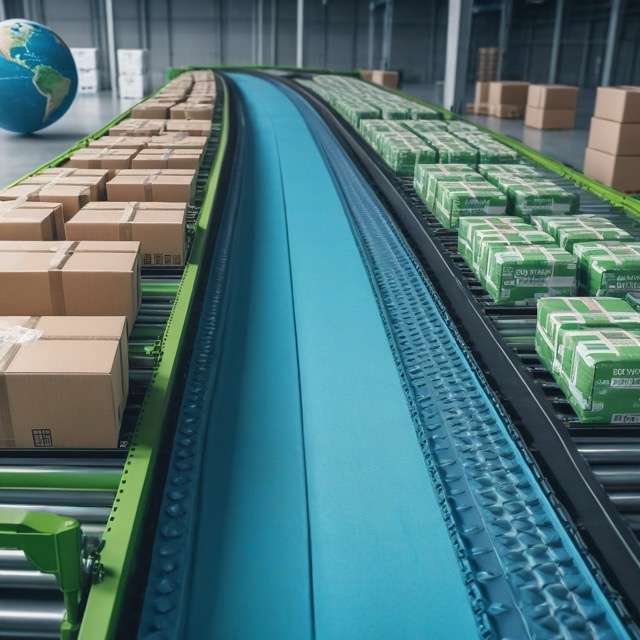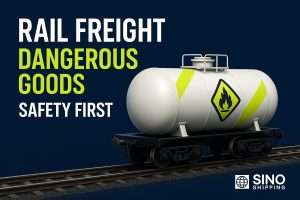Have you ever wondered what truly powers a successful dropshipping business? In the world of e-commerce, it’s logistics that serves as the engine behind seamless operations. Efficient logistics ensures products move smoothly from suppliers to customers, directly impacting shipping speed and customer satisfaction. In this article, we’ll dive into how mastering logistics can make or break your dropshipping business, covering key strategies to streamline operations, reduce costs, and enhance the overall customer experience.
Understanding the Basics of Dropshipping Logistics
What Does Logistics Mean in the Context of Dropshipping?
Have you ever wondered what logistics truly means in the world of dropshipping? In essence, logistics in dropshipping involves the coordination and management of various processes that ensure your products get from your suppliers to your customers efficiently. Unlike traditional e-commerce, where you handle inventory and shipping directly, dropshipping logistics is about seamlessly integrating with your suppliers’ systems to manage orders, track shipments, and handle returns—all without ever touching the product yourself. This is what makes logistics the backbone of a successful dropshipping business.
Key Components of Dropshipping Logistics
To master logistics in dropshipping, you need to focus on four key components that are critical to your business’s success:
- Inventory Management: Even though you don’t hold inventory, keeping track of your suppliers’ stock levels is essential. Imagine a customer placing an order only to find out the product is out of stock. This not only leads to customer dissatisfaction but also damages your brand’s reputation. Leveraging tools that sync with your suppliers can ensure you’re always aware of stock levels.
- Order Fulfillment: Once an order is placed, the fulfillment process begins. This involves automated systems that notify your supplier, initiate the packaging process, and prepare the product for shipment. The quicker this process, the happier your customers will be.
- Shipping and Delivery: Speedy and reliable shipping is crucial in the dropshipping model. Customers expect their products to arrive promptly. Partnering with the right carriers and offering multiple shipping options can give you a competitive edge. Remember, delays in shipping can lead to negative reviews and lost customers.
- Returns Management: Handling returns efficiently is a must. A clear and simple returns policy not only builds trust but also makes the process smoother for both you and your customers. Your logistics system should be capable of managing returns and exchanges without hassles, keeping the customer experience positive.
Why Logistics is Crucial in Dropshipping
So, why is logistics so important in dropshipping? Each component we’ve discussed directly impacts the customer experience and, ultimately, your profitability. Poor inventory management can lead to out-of-stock issues, slow order fulfillment can frustrate customers, and inadequate shipping options can drive potential buyers to competitors. Moreover, a poorly handled returns process can damage your brand’s reputation.
In contrast, efficient logistics can lead to higher customer satisfaction, better reviews, and increased repeat business. When your logistics are optimized, you not only save time and money but also create a smoother and more reliable experience for your customers, which is the key to growing a successful dropshipping business.
The Logistics Supply Chain in Dropshipping
What Does the Dropshipping Supply Chain Look Like?
Ever wondered how a product gets from a supplier to a customer in the dropshipping model? The dropshipping supply chain is a streamlined process that involves multiple players working together to deliver products efficiently. Unlike traditional retail, where you manage every step, dropshipping relies on outsourcing many tasks to third-party suppliers. The supply chain begins when a customer places an order on your website. This order is then automatically forwarded to your supplier, who is responsible for picking, packing, and shipping the product directly to the customer. Your role is to ensure this process runs smoothly and without delays.
The Role of Suppliers in Dropshipping Logistics
Choosing the right suppliers is critical to the success of your dropshipping business. Reliable suppliers are the foundation of a strong logistics system, as they are responsible for maintaining inventory, fulfilling orders, and ensuring timely deliveries. But how do you find the right ones?
- Selecting Reliable Suppliers: Start by evaluating potential suppliers based on their reputation, delivery times, and product quality. Suppliers with a proven track record of on-time delivery and high product standards are worth their weight in gold. Using platforms like AliExpress, Oberlo, or SaleHoo can help you connect with trustworthy suppliers.
- Communication and Coordination: Once you’ve selected a supplier, maintaining open communication is key. Regular updates on stock levels, order status, and potential delays can help you keep your customers informed and satisfied. Effective communication minimizes misunderstandings and ensures that orders are processed and delivered without a hitch.
Inventory Management Without Holding Stock
One of the biggest advantages of dropshipping is that you don’t have to hold any inventory. But how do you manage inventory without physically storing products?
- Just-in-Time Inventory: This strategy involves sourcing products only when a customer places an order. It reduces overhead costs and ensures you’re only purchasing what you need. However, it requires close coordination with your supplier to avoid stockouts and delays.
- Virtual Inventory Systems: Virtual inventory management tools allow you to track your supplier’s stock levels in real-time. This enables you to accurately list available products on your website and avoid selling items that are out of stock. Tools like Inventory Source or Syncee can integrate directly with your suppliers, ensuring your inventory data is always up-to-date.
Order Processing and Fulfillment
The speed and efficiency of order processing can make or break your dropshipping business. The faster an order is processed, the sooner it reaches your customer, leading to higher satisfaction and repeat business.
- Automated Order Processing: Automating the order processing system is essential for scalability. By using e-commerce platforms like Shopify or WooCommerce, you can set up automated systems that immediately forward orders to your suppliers upon payment confirmation. This reduces manual errors and speeds up the fulfillment process.
- Integration with E-commerce Platforms: Seamless integration between your e-commerce platform and your supplier’s systems is crucial. This integration allows for real-time order updates, automatic tracking information, and better inventory management. By syncing your store with suppliers, you can provide customers with accurate delivery estimates and enhanced customer service.
Shipping and Delivery in Dropshipping
Why Is Fast Shipping Crucial for Dropshipping Success?
Ever wondered why fast shipping is so important in dropshipping? In today’s e-commerce landscape, customers expect their orders to arrive quickly, often within a few days. If your shipping times are slow, you’re not just risking losing a sale—you’re risking losing that customer forever. Studies show that 53% of online shoppers won’t complete a purchase if they don’t know when the product will arrive. This makes fast and reliable shipping a critical factor in boosting your conversion rates and ensuring customer satisfaction.
Shipping Methods: Standard vs. Expedited Shipping
When it comes to shipping, the method you choose can significantly impact your delivery times and costs. Here’s a breakdown of the most common shipping methods:
- Standard Shipping: Typically the most cost-effective, but it also comes with longer delivery times. Standard shipping is often used for domestic orders and is the default option for many dropshipping businesses. However, the downside is that it may take anywhere from 5 to 14 days to reach the customer, depending on the location.
- Expedited Shipping: This method is faster, often delivering products within 2 to 5 days. While it’s more expensive, it caters to customers who are willing to pay extra for quicker delivery. Expedited shipping can increase your customer satisfaction and lead to higher repeat purchase rates.
- International Shipping Challenges: Shipping across borders introduces additional complexities, such as customs delays, higher shipping costs, and longer delivery times. It’s essential to set clear expectations with your customers and provide accurate delivery estimates to avoid disappointment.
Choosing the Right Carriers: Domestic vs. International Carriers
Selecting the right shipping carriers is key to ensuring that your products reach customers on time and in good condition. But how do you decide between domestic and international carriers?
- Domestic Carriers: These are often more reliable and faster for local deliveries. Companies like UPS, FedEx, and USPS offer a range of services that can be tailored to meet your needs. Domestic carriers typically provide better tracking and more consistent delivery times.
- International Carriers: For global shipping, carriers like DHL and FedEx International are popular choices. They offer extensive networks and can handle customs processes more efficiently. However, they also tend to be more expensive, so it’s crucial to negotiate shipping rates to keep costs under control.
Tracking and Transparency: Keeping Your Customers Informed
In the world of dropshipping, tracking and transparency are not just nice-to-haves—they’re essentials. Providing real-time tracking information allows your customers to follow their order every step of the way, reducing anxiety and building trust.
- Providing Real-Time Tracking: Customers want to know exactly where their order is at any given time. Integrating tracking software that automatically updates customers about their shipment’s status can enhance the overall shopping experience. According to a survey, 82% of consumers rate the ability to track their packages as one of the most important aspects of a positive delivery experience.
- Communicating with Customers: Keeping an open line of communication is vital, especially if there are delays. Informing customers ahead of time about potential shipping delays can prevent frustration and reduce the likelihood of negative reviews. Proactive communication shows that you value your customers and are committed to providing excellent service.
Comparing Shipping Methods
| Shipping Method | Delivery Time | Cost | Best For | Cons |
|---|---|---|---|---|
| Standard Shipping | 5-14 days | Low | Budget-conscious customers | Longer wait times |
| Expedited Shipping | 2-5 days | High | Customers who prioritize speed | Higher shipping costs |
| International Shipping | Varies by region | Very High | Global customers | Customs delays, higher costs |
This table can be used to help readers quickly understand the pros and cons of each shipping method, making it easier for them to choose the best option for their dropshipping business.
Cost Management in Dropshipping Logistics
How Do Shipping Costs Impact Your Profit Margins?
Are you aware of how much shipping costs can eat into your profit margins in dropshipping? Unlike traditional retail, where you control every aspect of fulfillment, dropshipping puts you at the mercy of your suppliers and carriers. Every cent spent on shipping is a cent taken away from your profits. In fact, shipping costs can account for up to 20% of your overall expenses, making it a crucial factor in pricing your products. Understanding and managing these costs is essential if you want to maintain healthy margins and remain competitive in the market.
Understanding Shipping Costs: Hidden Fees and Pitfalls
Shipping costs aren’t always straightforward. Beyond the basic fee to send a package, there are often hidden fees that can surprise you. These might include fuel surcharges, residential delivery fees, or even charges for handling oversized packages. These fees can quickly add up, turning what seemed like a profitable sale into a loss. It’s crucial to analyze your shipping invoices regularly to identify and address these hidden costs. For example, carriers like UPS and FedEx have been known to add surcharges for deliveries to rural areas, which can significantly increase your costs if you’re not prepared.
Strategies to Reduce Shipping Costs
Reducing shipping costs is a key part of maximizing your profit margins in dropshipping. Here are some strategies to help you keep those costs down:
- Bulk Shipping Discounts: Negotiating bulk shipping rates with your carriers can save you a significant amount of money. Even if you’re not shipping large volumes now, some carriers offer volume-based discounts as your business grows. For example, you might get a 10-20% discount if you commit to shipping a certain number of packages each month.
- Partnering with Local Warehouses: Using local warehouses can reduce shipping distances and costs. This strategy is particularly effective for international dropshipping, where long shipping times and high costs can be a barrier to sales. By storing inventory closer to your customers, you can speed up delivery times and reduce expenses.
Balancing Cost and Speed: When to Offer Free Shipping
Should you offer free shipping, and if so, when? Free shipping is a powerful marketing tool, but it’s not always the best choice for your bottom line. Offering free shipping can boost your conversion rates, with 93% of online shoppers reporting that free shipping would encourage them to buy more products. However, it’s important to carefully calculate the costs before deciding to offer it. One strategy is to offer free shipping on orders over a certain amount, which encourages customers to spend more while allowing you to cover the shipping cost.
Using Shipping as a Marketing Tool
Shipping isn’t just a cost—it can also be a powerful marketing tool. Offering options like expedited shipping or same-day delivery can set you apart from competitors. You can also use shipping as a way to build customer loyalty by offering free or discounted shipping to repeat customers or loyalty program members. For instance, Amazon Prime’s success is built in part on the promise of free two-day shipping, which has been a significant driver of its customer retention.
Returns Management in Dropshipping
How Do You Handle Returns Effectively in Dropshipping?
Handling returns in dropshipping can be a complex and challenging process. Unlike traditional retail, where you have direct control over the products, returns in dropshipping involve coordination between multiple parties—your customers, suppliers, and carriers. This complexity can lead to miscommunication, delays, and additional costs, making it crucial to have a well-thought-out returns management strategy in place.
Challenges of Handling Returns in Dropshipping
One of the biggest challenges in dropshipping is managing customer expectations when it comes to returns. Customers expect a seamless and hassle-free returns process, but when you’re working with third-party suppliers, things can get tricky.
- Managing Customer Expectations: Customers want quick and easy returns, but in a dropshipping model, this can be difficult to achieve. Delays in processing returns due to supplier coordination or shipping times can lead to dissatisfaction and negative reviews. It’s essential to set clear expectations upfront, informing customers about potential timelines for returns and refunds.
- Costs Involved in Returns: Returns can be expensive, especially if you’re dealing with international suppliers. Shipping fees, restocking charges, and processing costs can quickly add up, eroding your profit margins. It’s important to factor in these costs when setting your return policies and pricing your products. For example, offering free returns might be attractive to customers, but could significantly impact your bottom line if not managed properly.
Setting Up a Seamless Returns Process
To mitigate the challenges of handling returns, setting up a seamless and efficient returns process is crucial. A well-managed returns process can enhance customer satisfaction and even drive repeat business.
- Clear Return Policies: Having clear and detailed return policies on your website is the first step in managing returns effectively. Your policy should outline the conditions under which returns are accepted, the time frame for returns, and who bears the cost of return shipping. A well-communicated return policy can prevent misunderstandings and reduce customer frustration.
- Working with Suppliers on Returns: Establish strong relationships with your suppliers to streamline the returns process. This includes agreeing on who will handle the return shipping, how refunds or exchanges will be managed, and the timelines for processing returns. By working closely with your suppliers, you can ensure that returns are handled promptly and efficiently, keeping your customers happy.
Impact of Returns on Customer Satisfaction
Returns don’t have to be a negative experience. In fact, a well-managed returns process can build trust and encourage repeat business. Customers are more likely to shop with you again if they know they can return items easily and without hassle.
- Building Trust with a Hassle-Free Returns Process: A smooth returns process shows customers that you value their satisfaction. By offering easy returns, you can increase customer loyalty and positive word-of-mouth. For example, companies like Zappos have built their reputation on free and easy returns, which has been a significant factor in their success.
- Turning Returns into Repeat Business: Use the returns process as an opportunity to engage with your customers. Offering store credit instead of refunds, providing discounts on future purchases, or simply handling the return quickly and professionally can turn a potentially negative experience into a positive one. This approach not only recovers the lost sale but also encourages future purchases.
Wrapping Up: Mastering Dropshipping Logistics
Key Takeaways: The Impact of Logistics on Dropshipping Success
In this guide, we’ve explored how logistics plays a pivotal role in the dropshipping business model. From managing inventory without holding stock to optimizing shipping and returns, effective logistics can significantly enhance customer satisfaction and profitability. By leveraging technology, automating processes, and carefully choosing suppliers and shipping methods, you can build a more efficient and customer-focused dropshipping operation.
Moving Forward: The Need for Continuous Logistics Innovation
As the e-commerce landscape evolves, so must your logistics strategies. Staying competitive in the dropshipping industry means continuously adapting and refining your logistics processes. Whether it’s integrating new technologies, adjusting to changing customer expectations, or finding ways to reduce costs, the ability to innovate will keep your business ahead of the curve.
Take Action: Optimize Your Logistics for Dropshipping Success
Now that you understand the crucial role of logistics in dropshipping, it’s time to take action. Evaluate your current logistics setup, identify areas for improvement, and implement the strategies discussed in this guide. By optimizing your logistics, you can enhance your business’s efficiency, boost customer satisfaction, and drive sustainable growth in your dropshipping venture.
FAQ: Common Questions About Logistics in Dropshipping
What is the role of logistics in dropshipping?
Logistics in dropshipping involves managing the entire flow of goods from suppliers to customers. This process includes handling inventory, processing orders, managing shipping, and dealing with returns. Effective logistics ensures timely deliveries, maintains customer satisfaction, and keeps your business profitable.
How can I optimize shipping costs in my dropshipping business?
To optimize shipping costs, you can negotiate bulk shipping discounts with carriers, partner with local warehouses to reduce shipping distances, and offer free shipping selectively, such as for orders over a certain amount. This approach encourages larger purchases while covering shipping expenses.
What are the best tools for automating logistics in dropshipping?
Popular tools for automating logistics include Oberlo, which integrates with Shopify to automate order processing and fulfillment, ShipStation, which manages and automates shipping tasks, and Inventory Source, which automates inventory management and order routing to suppliers.
How do returns work in a dropshipping business?
In a dropshipping business, returns typically involve coordinating with your supplier. Customers usually ship the product back to the supplier, who then processes the return or exchange. Having a clear return policy and maintaining effective communication with both customers and suppliers is essential for managing returns smoothly.
How can I ensure fast shipping for my customers?
To ensure fast shipping, choose reliable suppliers with a good track record, partner with carriers that offer expedited options, and consider using local warehouses or fulfillment centers to reduce shipping times. Automating order processing also speeds up the fulfillment cycle.
What should I consider when selecting suppliers for my dropshipping business?
When selecting suppliers, consider their reliability, communication capabilities, and shipping capabilities. Choose suppliers with a strong track record for on-time deliveries and quality products, ensure they are responsive to regular communication, and verify that they can handle your shipping requirements, including international shipping if needed.
Why is data analytics important in dropshipping logistics?
Data analytics is crucial because it allows you to track sales trends, optimize inventory levels, and improve shipping efficiency. By analyzing data, you can make informed decisions about stocking products, offering promotions, and streamlining your supply chain. Predictive analytics also helps forecast demand, reducing the risk of stockouts or overstocking.













